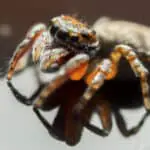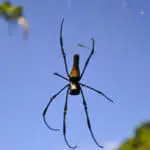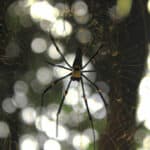As someone who has a fascination with spiders, I understand the thrill of finding one in the wild. However, not everyone shares my enthusiasm for these eight-legged creatures, and some may even find them terrifying. Whether you’re an arachnophobe or an arachnophile, knowing how to find spiders is a useful skill to have.
Understanding spiders is the first step in finding them. Spiders are arthropods, which means they have an exoskeleton and jointed legs. They are found in almost every habitat on Earth, from deserts to rainforests. Spiders are predators and feed on insects, other spiders, and even small animals like mice.
Identifying spiders in your home can be a challenge, but it’s helpful to know what species you’re dealing with. Some spiders, like the black widow and brown recluse, are venomous and can be dangerous to humans. Other spiders, like the common house spider, are harmless and can actually be beneficial by feeding on other insects in your home. Knowing how to identify spiders can help you determine if they pose a threat or not.
Key Takeaways
- Understanding the characteristics of spiders is essential in finding them.
- Identifying spiders in your home can help you determine if they pose a threat or not.
- Spiders are found in almost every habitat on Earth and are important predators in many ecosystems.

Understanding Spiders
Spider Species
There are over 45,000 known species of spiders worldwide, with around 3,000 found in North America alone. Some of the most common spider species found in homes and gardens include the American house spider, black widow spider, brown recluse spider, and wolf spider.
Spider Appearance
Spiders come in all shapes, sizes, and colors. They have two main body parts: the cephalothorax (head and thorax combined) and the abdomen. The color and shape of the abdomen can vary greatly between species, with some being round and others being elongated. Most spiders have eight legs, but some species have fewer. Some spiders have distinctive markings on their bodies, such as the red hourglass shape on the underside of the black widow spider.
Spider Behavior
Spiders are hunters and use their webs or hunting techniques to catch prey. Some spiders are solitary, while others live in groups. Female spiders are often larger than males and can be more aggressive, especially when protecting their eggs. Spiders mate in a variety of ways, with some species engaging in elaborate courtship rituals. Some spiders are indoor dwellers, while others prefer to live outdoors in gardens or wooded areas.
Overall, understanding the different species, appearance, and behavior of spiders can help you better identify and locate them in your home or garden.
Identifying Spiders in Your Home
As someone who has dealt with spiders in my own home, I know how important it is to be able to identify them. In this section, I’ll cover some tips on how to identify spiders in your home, including a spider identification guide and information on common home spiders.
Spider Identification Guide
If you’ve found a spider in your home and want to identify it, there are a few things to look for. First, take note of its size and color. Is it small and brown, or large and black? Does it have any distinctive markings, such as stripes or spots?
Next, take a look at its body shape and leg structure. Some spiders have long, thin legs, while others have shorter, thicker legs. Some have a round body shape, while others are more elongated.
Finally, try to get a good look at its eyes. Spiders have anywhere from two to eight eyes, depending on the species, and the arrangement of those eyes can be a good clue for identification.
Common Home Spiders
There are several types of spiders that are commonly found in homes, including the American house spider, cellar spider, and long-bodied cellar spider. Here’s a bit more information on each of these species:
- American house spider: These spiders are small and brown, with a round body shape and long, thin legs. They are often found in webs in corners or on ceilings.
- Cellar spider: Also known as “daddy longlegs,” these spiders have long, thin legs and a small, round body. They are often found in dark, damp places like basements or crawl spaces.
- Long-bodied cellar spider: Similar in appearance to the cellar spider, but with a longer, more slender body. They are also found in dark, damp places.
In addition to these common spiders, there are many other species that could potentially make their way into your home. If you’re not sure what type of spider you’re dealing with, try taking a picture and using a spider identification guide or spider ID app to help you identify it.
Remember, while some spiders can be dangerous, most are harmless and even beneficial to have around. If you’re not comfortable dealing with spiders on your own, consider contacting a pest control professional for help.
Where to Find Spiders
As someone who has dealt with their fair share of spider sightings, I know the importance of knowing where to look for these creepy crawlies. In this section, I will provide you with some insight into spider habitats and regions to help you find these elusive creatures.
Spider Habitats
Spiders can be found in a variety of habitats, from forests to deserts to your own home. They tend to prefer dark, secluded areas where they can hide from predators and catch prey. Some common spider habitats in homes include attics, garages, closets, and cabinets.
When searching for spiders in your home, it’s important to check these areas thoroughly. Use a flashlight to look in dark corners and under furniture, and don’t forget to check behind doors and in the corners of rooms. Spiders may also build nests in these areas, which can help you locate them.
Spiders and Regions
Different types of spiders can be found in different regions of the United States. For example, the brown recluse spider is commonly found in the southern United States, while the black widow spider is found in many regions across the country.
If you’re trying to find a specific type of spider, it’s important to know where they are commonly found. Do some research on the spider you’re looking for and the regions where it is typically found. This can help you narrow down your search and increase your chances of finding the spider you’re looking for.
Overall, knowing where to look for spiders is key to finding them. Check common spider habitats in your home and do some research on the regions where the spider you’re looking for is commonly found. With a little patience and persistence, you’ll be able to track down that elusive spider in no time.
How Spiders Hunt and Feed
Spider Prey
Have you ever wondered how spiders find their prey? Well, spiders have a variety of hunting methods that vary from species to species. Some spiders are active hunters and search for their prey, while others build webs to capture their prey.
Active hunters, such as jumping spiders, use their excellent eyesight to track and stalk their prey. Other spiders, such as wolf spiders, use their sense of touch to detect vibrations in the ground to locate their prey. Some spiders, such as crab spiders, use their camouflage to blend in with their surroundings and ambush their prey.
Spider Webs
Spiders that build webs use their silk to construct intricate and unique traps to catch their prey. Spiders spin different types of webs for different purposes. For example, orb-weaving spiders spin webs to capture flying insects, while funnel-web spiders spin webs to capture ground-dwelling insects.
Once the prey is caught in the web, the spider will use its venom to subdue and kill the prey. After the prey is immobilized, the spider will use its fangs to inject digestive enzymes into the prey. The enzymes will break down the prey’s tissues, and the spider will then suck up the liquefied remains.
Some spiders, such as the black widow, will wrap their prey in silk to immobilize it before injecting their venom. Other spiders, such as the cellar spider, will wrap their prey in silk and hang it in their web to save it for later.
In conclusion, spiders have a variety of hunting and feeding methods. Whether they are active hunters or web builders, all spiders have adapted unique ways to catch and eat their prey.
Dealing with Spider Bites
If you’ve been bitten by a spider, don’t panic. Most spider bites are harmless and can be treated at home. However, some spider bites can be dangerous, so it’s important to know how to recognize them and when to seek medical attention.
Recognizing a Spider Bite
Spider bites can look different depending on the type of spider that bit you. In general, spider bites may appear as small red bumps or blisters, and they may be painful or itchy. Some spider bites may also cause more severe symptoms, such as fever, muscle pain, and nausea.
If you’re not sure whether you’ve been bitten by a spider, look for the following signs:
- Two puncture marks: Many spider bites leave two small puncture marks on the skin.
- Redness and swelling: The bite area may become red, swollen, and tender.
- Pain and itching: Spider bites can be painful or itchy, and the pain may radiate to other parts of the body.
- Symptoms: Some spider bites may cause more severe symptoms, such as fever, muscle pain, and nausea.
Venomous Spiders
While most spiders are harmless, some species are venomous and can cause serious health problems. The two most common venomous spiders in the United States are the black widow and the brown recluse.
Black widow spider bites can cause severe muscle pain, cramps, and spasms, as well as other symptoms such as fever and nausea. If you suspect you’ve been bitten by a black widow spider, seek medical attention immediately.
Brown recluse spider bites can cause a range of symptoms, including pain, swelling, and blistering. In some cases, the bite can lead to more serious health problems, such as tissue death and kidney failure. If you suspect you’ve been bitten by a brown recluse spider, seek medical attention as soon as possible.
In general, if you experience any of the following symptoms after a spider bite, seek medical attention immediately:
- Difficulty breathing
- Swelling of the face or mouth
- Severe pain or cramping
- Nausea or vomiting
- Fever or chills
- Redness or swelling that spreads from the bite area
Remember, most spider bites are harmless and can be treated at home. However, if you’re not sure whether a spider bite is serious or if you’re experiencing severe symptoms, it’s always best to seek medical attention.
Frequently Asked Questions
How can I locate a spider in my room?
If you suspect that there is a spider in your room, you can start looking for it in undisturbed areas such as behind boxes, in cabinets, behind and under appliances and furniture, and other places that are often left undisturbed. You can also use a bright flashlight to help you see in dark corners and crevices. Spiders are also attracted to food sources, so you can try leaving a cricket or cockroach in a visible spot to lure them out.
What are the best ways to catch a spider?
One of the easiest ways to catch a spider is to use a cup or a jar. Place the cup or jar over the spider, slide a piece of paper under the opening, and carefully lift the cup or jar. This will trap the spider inside, allowing you to safely release it outside. You can also use a vacuum cleaner with a hose attachment to suck up the spider and then release it outside.
Where are spiders commonly found in a house?
Spiders can be found in a variety of places in a house, but they tend to prefer dark, quiet areas. They are often found in basements, attics, closets, and other areas that are rarely disturbed. They can also be found in areas with a lot of clutter, such as piles of clothes or boxes.
What are some effective methods to get rid of spiders?
The best way to get rid of spiders is to prevent them from entering your home in the first place. Seal any cracks or gaps in your home’s exterior, and make sure that all of your doors and windows have screens. You can also use spider repellents, such as peppermint oil or vinegar, to keep spiders away. If you do have a spider infestation, you may need to call a professional exterminator.
Can one spider indicate the presence of more?
Yes, one spider can indicate the presence of more. Spiders often enter homes in search of food and shelter, so if you see one spider, there may be others nearby. Keep an eye out for webs or egg sacs, which can indicate a larger infestation.
What are some natural spider repellents?
There are several natural spider repellents that you can use to keep spiders away from your home. Peppermint oil, vinegar, and citrus oils are all effective at repelling spiders. You can also try placing chestnuts or horse chestnuts around your home, as spiders are said to dislike the smell. Additionally, keeping your home clean and free of clutter can help prevent spiders from entering in the first place.








